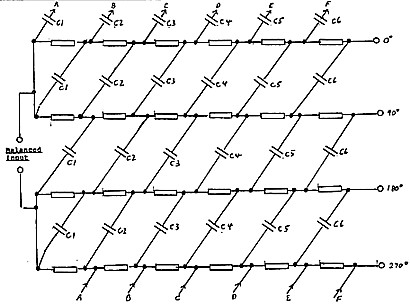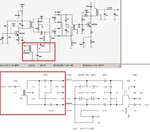neazoi
Advanced Member level 6

Hi I have found two types of BIDIRECTIONAL audio I/Q (45 degrees difference) phase shift networks, which I have enclosed in red squares.
I wonder, which of the two is better, in the sense that keeps the phase difference more constant throughout the 300Hz-3KHz audio region?
A third method is the polyhase network

[diagram from: users. tpg. com. au/ldbutler/Fig1SSBMod.jpg]
but does this complex circuit has asignificant advantage over the other simple ones?
Also what other options would you suggest?
- - - Updated - - -
Another option is figure 3 on this page
https://www.analog.com/en/design-ce...cuits-from-the-lab/cn0245.html#rd-description
I wonder, which of the two is better, in the sense that keeps the phase difference more constant throughout the 300Hz-3KHz audio region?
A third method is the polyhase network

[diagram from: users. tpg. com. au/ldbutler/Fig1SSBMod.jpg]
but does this complex circuit has asignificant advantage over the other simple ones?
Also what other options would you suggest?
- - - Updated - - -
Another option is figure 3 on this page
https://www.analog.com/en/design-ce...cuits-from-the-lab/cn0245.html#rd-description
Attachments
Last edited by a moderator:




